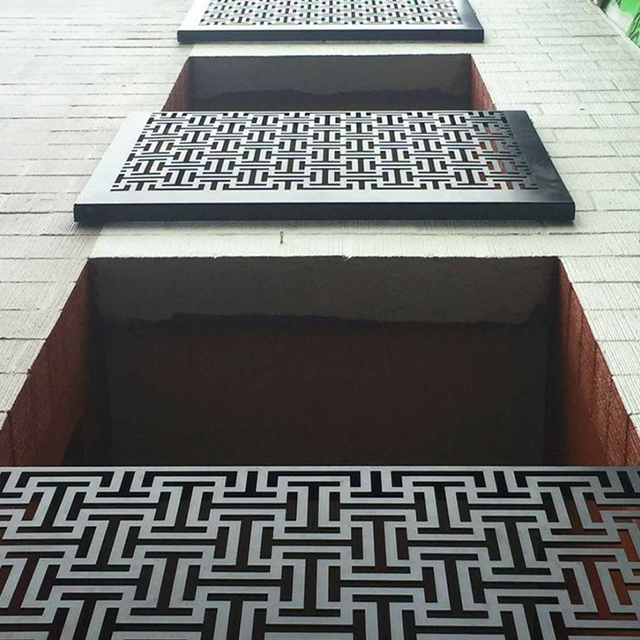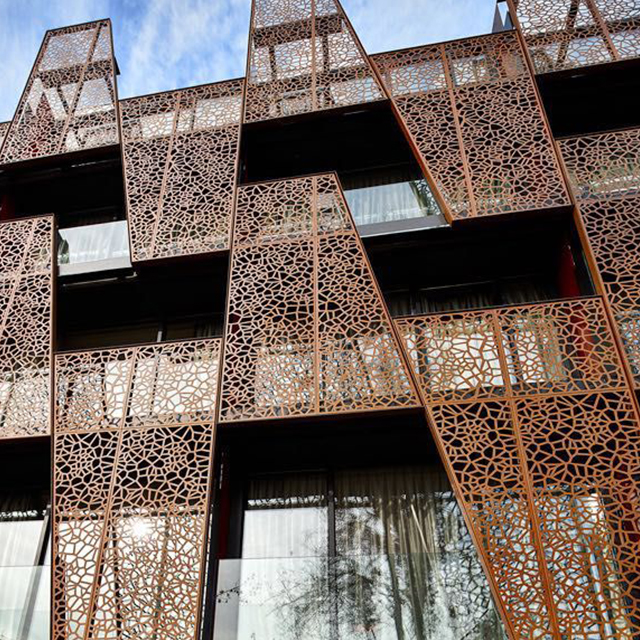Metal facade systems are an essential element of modern architecture, providing both aesthetic appeal and functional benefits. This comprehensive guide will explore the different types of metal facade systems, their benefits, applications, and the installation process. Whether you are an architect, builder, or property owner, understanding metal facade systems will help you make informed decisions for your building projects.
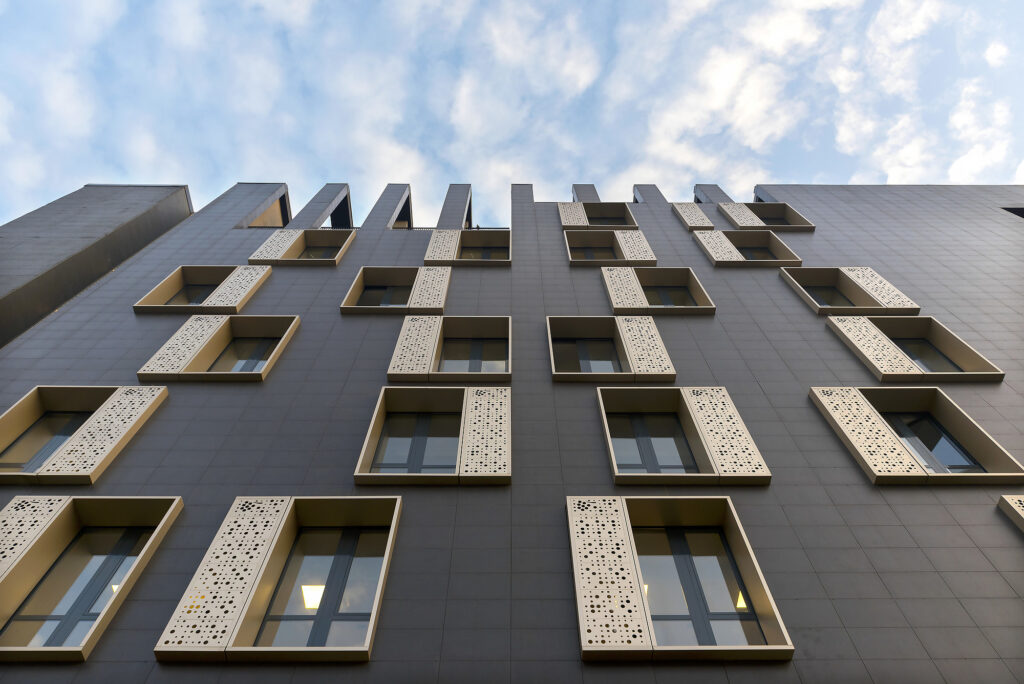
Types of Metal Facade Systems
Metal facade systems come in various types, each offering unique characteristics and applications. Here are some of the most common types:
Aluminum Composite Panels (ACP)
Aluminum Composite Panels (ACP) consist of two thin layers of aluminum bonded to a non-aluminum core, usually polyethylene. ACPs are known for their lightweight nature, durability, and versatility.
- Applications: Ideal for exterior cladding, signage, and interior design.
- Advantages: Lightweight, durable, and available in a variety of colors and finishes.
Steel Panels
Steel panels are strong, durable, and can be used in a variety of applications. They come in different types, including galvanized, stainless, and weathering steel.
- Applications: Suitable for commercial, industrial, and residential buildings.
- Advantages: High strength, durability, and resistance to weather and fire.
Zinc Panels
Zinc panels offer a unique aesthetic appeal with their natural patina, which develops over time. They are durable and resistant to corrosion.
- Applications: Often used in high-end residential and commercial projects.
- Advantages: Long-lasting, low maintenance, and environmentally friendly.
Copper Panels
Copper panels are known for their distinctive appearance and the ability to develop a patina that protects against corrosion. They offer a unique, luxurious look.
- Applications: Used in architectural projects where aesthetics are a priority.
- Advantages: Durable, recyclable, and visually appealing.
Titanium Panels
Titanium panels are lightweight, strong, and resistant to corrosion. They are often used in high-performance architectural applications.
- Applications: Suitable for both exterior and interior applications.
- Advantages: High strength-to-weight ratio, long lifespan, and low maintenance.
Benefits of Metal Facade Systems
Metal facade systems offer numerous benefits that make them a popular choice in modern architecture.
Durability
Metal facades are highly durable and can withstand harsh weather conditions, including wind, rain, and UV radiation. They are resistant to corrosion, fire, and impact, ensuring a long lifespan.
Aesthetic Appeal
Metal facades provide a sleek, modern look that can enhance the visual appeal of any building. They are available in various colors, finishes, and textures, allowing for creative and unique designs.
Sustainability
Many metal facades are made from recyclable materials, making them an environmentally friendly option. Additionally, metals like aluminum and steel can be recycled multiple times without losing their properties.
Low Maintenance
Metal facades require minimal maintenance compared to other materials. They are easy to clean and do not require frequent painting or sealing, reducing long-term maintenance costs.
Energy Efficiency
Metal facades can contribute to energy efficiency by providing excellent thermal insulation and reducing heat transfer. This can help lower energy costs and improve the building’s overall energy performance.
Applications of Metal Facade Systems
Metal facade systems are versatile and can be used in various applications across different sectors.
Commercial Buildings
In commercial buildings, metal facades offer a professional and modern appearance. They are commonly used in office buildings, retail stores, and hotels to create an impressive exterior.
Industrial Facilities
Metal facades are ideal for industrial facilities due to their durability and low maintenance requirements. They can withstand harsh environments and provide a robust protective layer for warehouses, factories, and other industrial buildings.
Residential Buildings
Metal facades are becoming increasingly popular in residential buildings. They can be used to create contemporary designs in single-family homes, apartment complexes, and condominiums.
Public Buildings
In public buildings such as schools, hospitals, and community centers, metal facades offer durability, low maintenance, and a modern aesthetic. They are also suitable for large-scale projects like airports and stadiums.
-
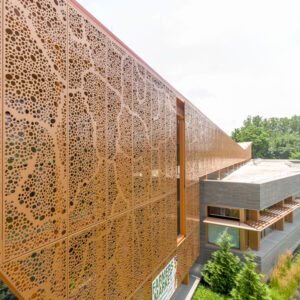 Alu Flat Bar Aluminum Curtain Wall Panel Facade Manufacturer
Alu Flat Bar Aluminum Curtain Wall Panel Facade Manufacturer -
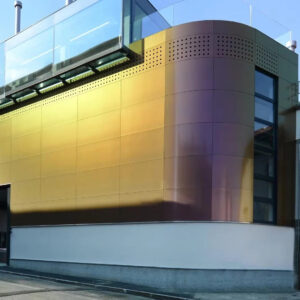 Concealed Fastener Aluminum Curtain Wall Panel Facade Manufacturer
Concealed Fastener Aluminum Curtain Wall Panel Facade Manufacturer -
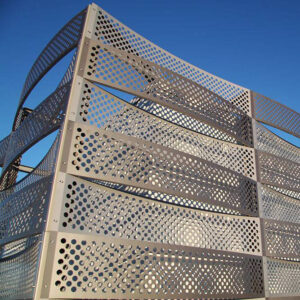 Combi Wall Aluminum Curtain Wall Panel Facade Manufacturer
Combi Wall Aluminum Curtain Wall Panel Facade Manufacturer -
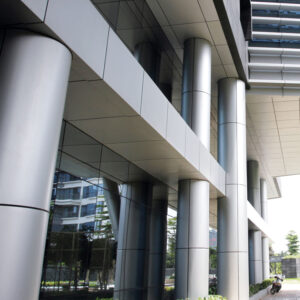 Perf Panels Aluminum Curtain Wall Panel Facade Manufacturer
Perf Panels Aluminum Curtain Wall Panel Facade Manufacturer -
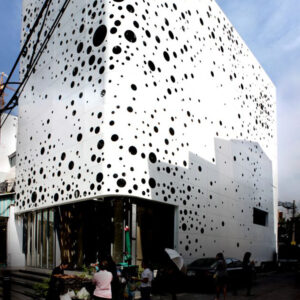 Wire Mesh For Railings Aluminum Curtain Wall Panel Facade Manufacturer
Wire Mesh For Railings Aluminum Curtain Wall Panel Facade Manufacturer -
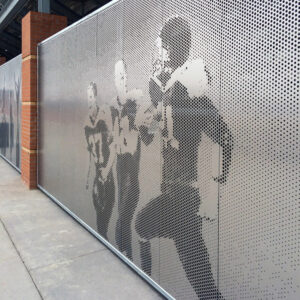 Rainscreen Facade Aluminum Curtain Wall Panel Facade Manufacturer
Rainscreen Facade Aluminum Curtain Wall Panel Facade Manufacturer -
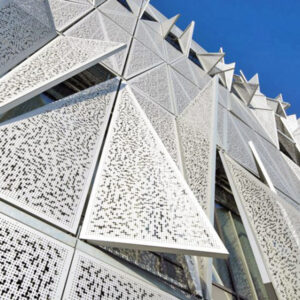 Imp Walls Aluminum Curtain Wall Panel Facade Manufacturer
Imp Walls Aluminum Curtain Wall Panel Facade Manufacturer -
 Corner Plate Aluminum Curtain Wall Panel Facade Manufacturer
Corner Plate Aluminum Curtain Wall Panel Facade Manufacturer -
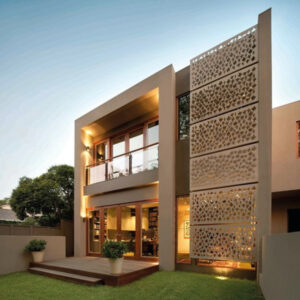 Aluminum Perforated Wall Panel Facade Manufacturer
Aluminum Perforated Wall Panel Facade Manufacturer -
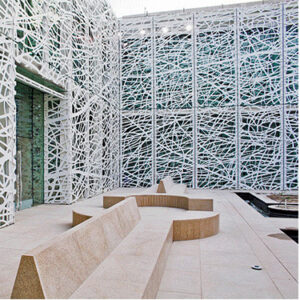 Diamond Plate For Walls Aluminum Curtain Wall Panel Facade Manufacturer
Diamond Plate For Walls Aluminum Curtain Wall Panel Facade Manufacturer
Installation Process of Metal Facade Systems
Installing metal facade systems involves several key steps to ensure a secure and professional finish.
Planning and Design
- Site Survey: Conduct a thorough site survey to assess the building structure and determine the installation requirements.
- Design Selection: Choose the appropriate metal facade system based on design specifications, performance requirements, and aesthetic preferences.
- Material Procurement: Source high-quality materials from reputable suppliers to ensure the longevity and performance of the facade.
Surface Preparation
- Cleaning: Ensure the surface is clean, dry, and free of any debris or contaminants.
- Inspection: Inspect the building structure for any defects or damage that need to be addressed before installation.
Installation of Support Structure
- Framework Installation: Install the supporting framework, such as aluminum or steel brackets and rails, to secure the metal panels.
- Alignment: Ensure the framework is level and properly aligned to achieve a uniform and professional appearance.
Panel Installation
- Positioning: Position the metal panels according to the design layout, ensuring consistent spacing between each panel.
- Fastening: Secure the panels to the supporting framework using the recommended fasteners or clips, ensuring they are firmly in place.
- Sealing: Apply sealants and caulking to joints and seams to prevent water infiltration and ensure a weather-tight seal.
Finishing Touches
- Inspection: Inspect the installation to ensure all panels are securely attached and aligned.
- Cleaning: Clean the panels to remove any installation debris and fingerprints.
- Final Adjustments: Make any necessary final adjustments to ensure the panels are properly aligned and secured.
Maintenance Tips for Metal Facade Systems
Maintaining metal facade systems is straightforward and can extend their lifespan and maintain their appearance.
Regular Cleaning
- Dusting and Washing: Regularly dust and wash the panels using mild soap and water to remove dirt, grime, and environmental pollutants.
- Avoid Harsh Cleaners: Avoid using abrasive cleaners or harsh chemicals that can damage the finish or protective coatings.
Routine Inspections
- Visual Inspection: Conduct routine visual inspections to check for any signs of damage, such as dents, scratches, or loose panels.
- Structural Inspection: Inspect the supporting framework and fasteners to ensure they are secure and in good condition.
Prompt Repairs
- Address Damage Quickly: Promptly address any issues, such as corrosion or loose panels, to prevent further damage and maintain the integrity of the facade.
- Touch-Up Paint: Use touch-up paint to repair any scratches or minor damage to the panels, ensuring a consistent and attractive appearance.
Conclusion
Metal facade systems offer a versatile, durable, and aesthetically pleasing solution for various building applications. From aluminum composite panels to zinc, copper, and titanium panels, there are numerous options to suit different design and performance requirements. By understanding the types, benefits, and installation process of metal facade systems, you can make informed decisions for your next building project and achieve a professional and long-lasting result.
